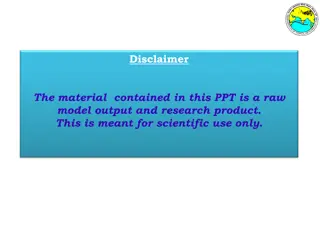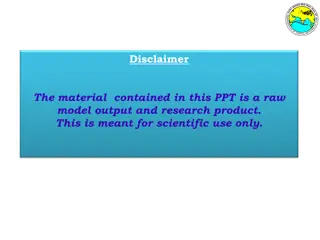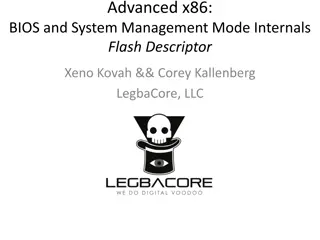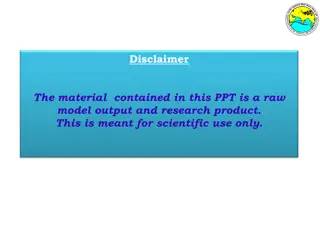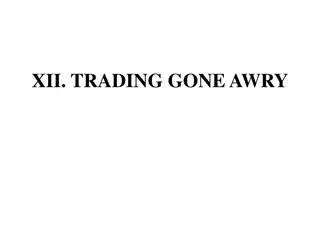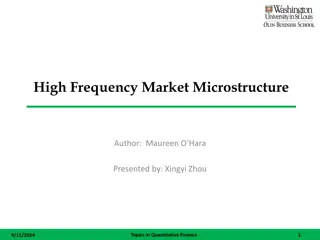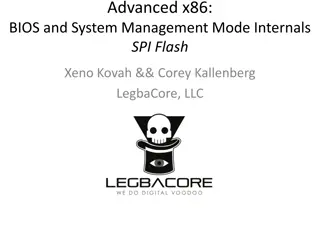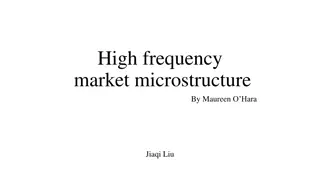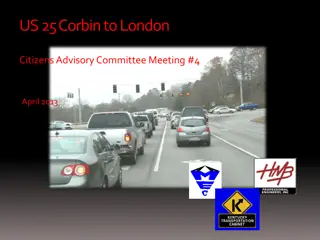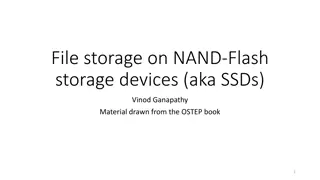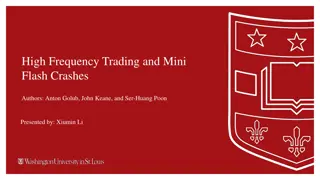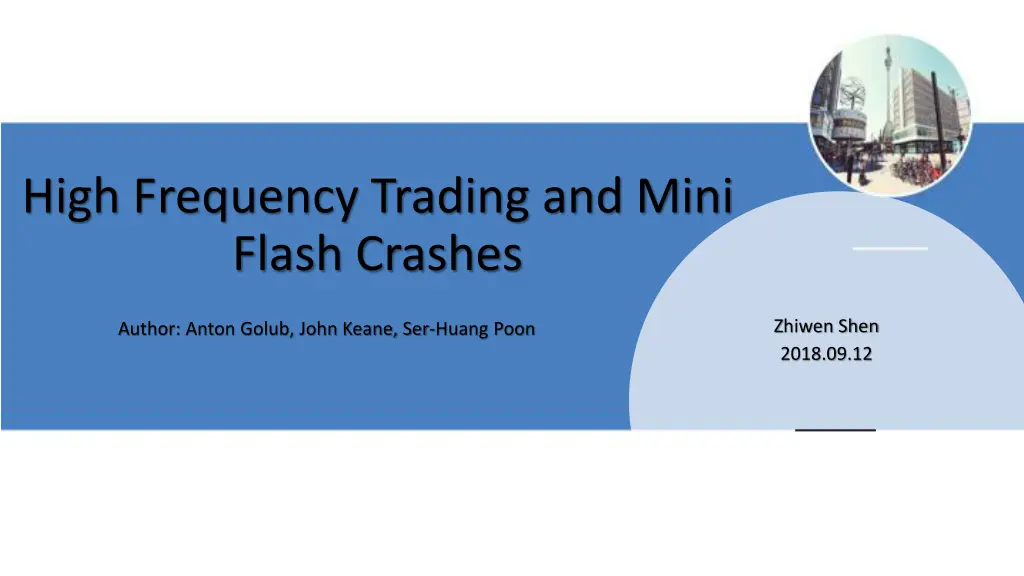
High Frequency Trading and Mini Flash Crashes Analysis
Explore the impact of high frequency trading on mini flash crashes in US equity markets from 2006-2011. Discover the adverse effects on market liquidity and the association with fleeting liquidity due to aggressive use of Intermarket Sweep Orders and Regulation NMS. Gain insights into how Mini Flash Crashes are influenced by regulation framework and market fragmentation.
Download Presentation

Please find below an Image/Link to download the presentation.
The content on the website is provided AS IS for your information and personal use only. It may not be sold, licensed, or shared on other websites without obtaining consent from the author. If you encounter any issues during the download, it is possible that the publisher has removed the file from their server.
You are allowed to download the files provided on this website for personal or commercial use, subject to the condition that they are used lawfully. All files are the property of their respective owners.
The content on the website is provided AS IS for your information and personal use only. It may not be sold, licensed, or shared on other websites without obtaining consent from the author.
E N D
Presentation Transcript
High Frequency Trading and Mini Flash Crashes Zhiwen Shen 2018.09.12 Author: Anton Golub, John Keane, Ser-Huang Poon
Table of Contents Abstract Introduction & Mini Flash Crash Definition Research & Authentication Dataset Statistics on Mini Flash Crash & Definition of ISOs Mini Flash Crash impact on market Association with fleeting liquidity Conclusion
Abstract We analyze all Mini Flash Crashes (or Flash Equity Failures) in the US equity markets in the four most volatile months during 2006-2011. In contrast to previous studies, we find that Mini Flash Crashes are the result of regulation framework and market fragmentation, in particular due to the aggressive use of Intermarket Sweep Orders and Regulation NMS protecting only Top of the Book. We find strong evidence that Mini Flash Crashes have an adverse impact on market liquidity and are associated with Fleeting Liquidity. Key words Mini Flash Crash / Intermarket Sweep Orders (ISOs) / market liquidity
Introduction May 6th 2010 Flash Crash HFT Generated a hot-potato volume accelerating mutual fund's sell side pressure and contributing to the sharp price declines ............ Trading aggressiveness was significantly higher for that entire day, proxied by the use of ISOs. HFTs can process information on stock values faster than slow traders, adverse selection could lead to systemic risk events, such as the May 6th 2010 Flash Crash
Mini Flash Crash Definition Down Crash Up Crash It has to tick down at least 10 times before ticking up Price changes have to occur within 1.5 seconds Price change has to exceed - 0.8% It has to tick up at least 10 times before ticking down Price changes have to occur within 1.5 seconds Price change has to exceed 0.8%
Dataset The corresponding periods were highly volatile including the unfolding of the global financial crisis, and the collapse of Lehman Brothers and the May 6th 2010 Flash Crash. Analysis of Mini Flash Crashes means processing billions of trades and quotes, therefore we selected months with the most crashes - hence our dataset covers over one-quarter (27.75%) of all Mini Flash Crashes reported to have occurred in the period of 2006-2011.
ISO-initiated Mini Flash Crash The conditions defining a Mini Flash Crash set out previously must be satisfied The trades constituting the Mini Flash Crash have to be marked ISO, except for the rest k trades that can be marked as non-ISO if they are executed within the least aggressive market-wide available best quotes10 in the previous one (1) second.
Market liquidity 60 sec before and after the occurrence of Mini Flash Crashes
Locked & Crossed NBBO Quotes
C Connection onnection Fleeting Liquidity & Mini Flash Crash Fleeting Liquidity & Mini Flash Crash
Logit Regression Statistics
Conclusion In this article we analyze Mini Flash Crashes in US equity markets. We find that Mini Flash Crashes are the result of regulatory framework and market fragmentation; in particular due to aggressive use of Intermarket Sweep Orders. We find that Mini Flash Crashes have an adverse impact on market liquidity resulting in wider spread, increased number of locked and crossed NBBO quotes and decrease in quoted volume. Finally, we document the phenomenon of Fleeting Liquidity associated with ultra-fast crashes Mini Flash Crashes of small volume, and a small number of trades.







